I remember when I just started learning about coffee and ordered an espresso in a specialty coffee shop. Upon taking my order, the barista asked me, “Single or double shot?”
That sure took me off guard. If you have been in the same confusing situation, you have no doubt wondered what the difference between a single vs. double espresso is. Perhaps you even bought a home espresso machine and aren’t sure how many shots you need to make perfect lattes and cappuccinos.
You might think a double espresso is simply two single shots. Well, yes and no. The difference between espresso sizes is much more complicated than that.
In this blog post, I’ll tell you the differences between single vs. double shots.
Single vs. double shot coffee dose
If you are new to drinking espresso, you might be confused about what “coffee dose” means. It’s simply the amount of coffee you use for extracting coffee.
For espresso, the coffee dose is fairly standardized. You need roughly 7-8 grams of coffee for a single shot, while a double shot requires 14-16 grams.
It’s vital to get the coffee dose right when pulling espresso. The espresso machine prepares the drink by forcing hot water through the finely ground coffee beans under high pressure.
This method extracts coffee oils, caffeine, and other compounds very quickly, which makes it a highly sensitive process.
Using both too little and too much coffee when making espresso will ruin the well-balanced taste.
Brewing with too little ground coffee means the water flows through it too fast, resulting in under-extraction. Under-extracted espresso can taste sour when consumed, or be bland and weak.
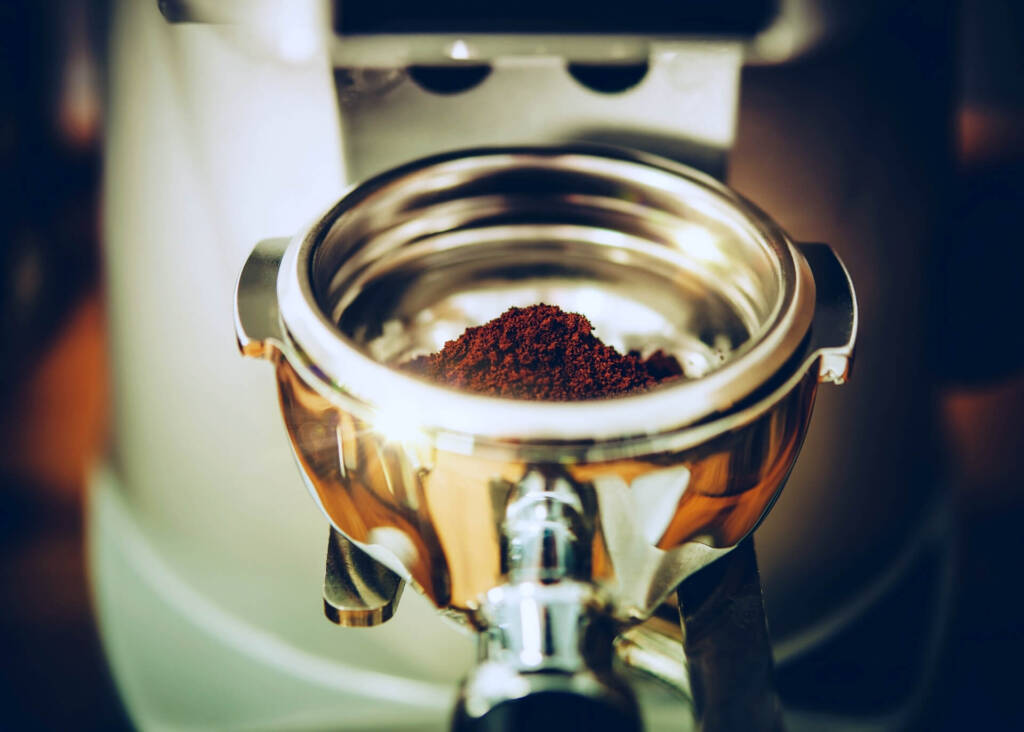
Packing more coffee grounds than necessary in the portafilter will not let the water through fast enough. This causes over-extraction, making the espresso overly concentrated and pushing the flavor profile firmly to the unpalatably bitter side.
Accurately measuring the coffee dose is crucial for achieving the perfect brewed coffee. That’s why coffee aficionados and baristas use highly sensitive digital coffee scales to measure the beans.
However, you could still mess up the measurement, depending on whether you measure the beans before or after you grind them.
Grinding affects the beans’ volume and weight slightly and could result in inconsistent espresso taste and quality. I strongly recommend weigheing your grounds before brewing.
Having said that, coffee taste is a very personal matter. If you enjoy your espresso a bit weaker or stronger, there’s no reason you can’t use one gram more or less ground coffee.
What matters is your preference — not a traditional definition of how much coffee an espresso needs!
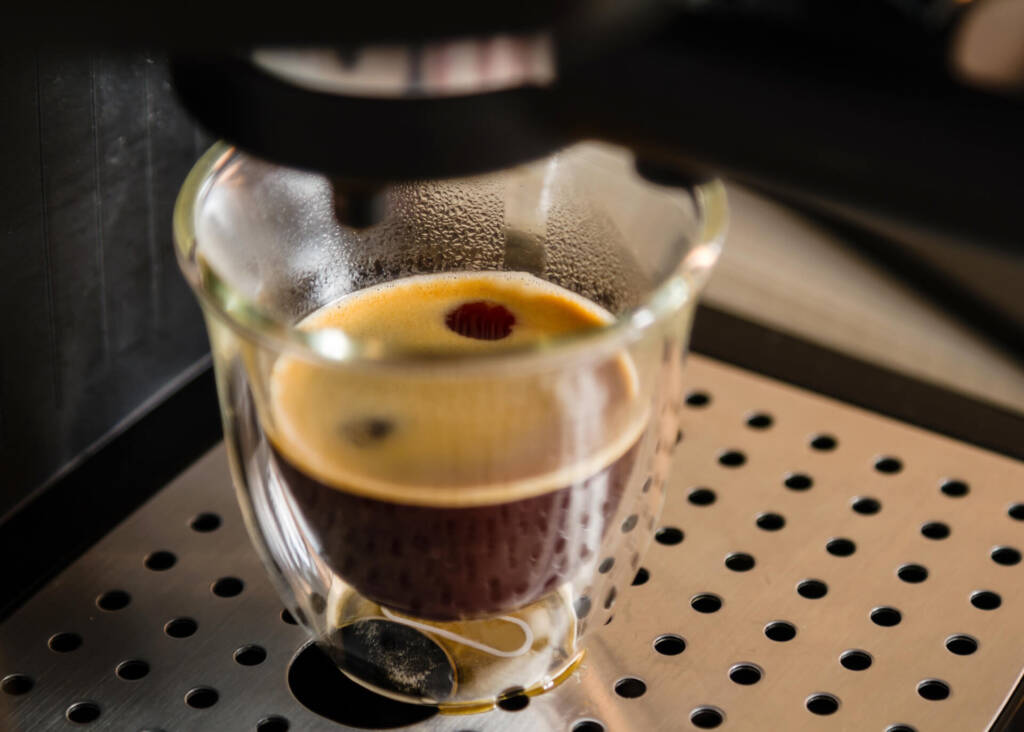
Extraction time
When starting my coffee journey, I thought making a cup of double espresso would take twice as long as a single shot.
That makes sense, right? How wrong I was!
Single and double espresso require the same extraction time — around 25 seconds.
You may scratch your head, wondering how to make more coffee simultaneously. The answer lies in how baristas — at home and specialty coffee shops — use espresso machines.
There are two kinds of portafilters (the filter basket espresso makers use) — a single and double basket.
A single basket holds between 7-12 grams of coffee and has one spout. A double basket takes 14-21 grams and has two spouts, also called a split-style portafilter.
The split portafilter separates the espresso stream into single-shot portions that can be poured into one or two cups.
It’s rare to see a coffee shop barista use a single-shot basket. Even when making one cup, they will use a split portafilter and serve you only one shot. As such, making single and double shots take the same extraction time.
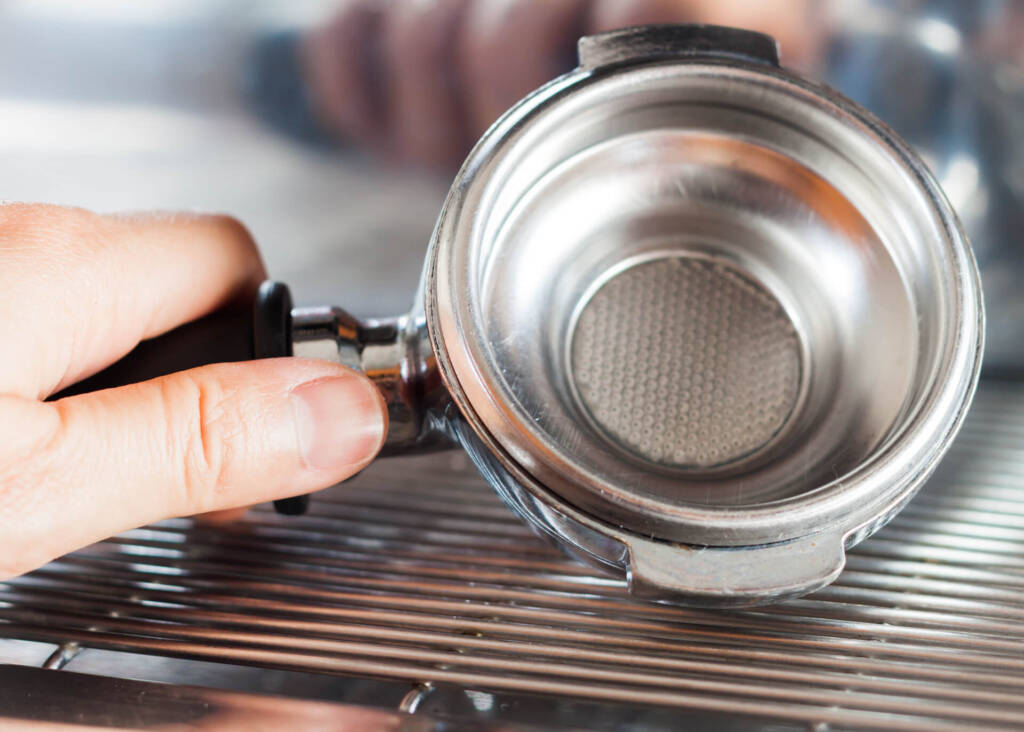
Busy baristas opt for double baskets for simple convenience. Single baskets often have a funnel-like shape, which makes it difficult to tamp the fine coffee grounds evenly.
In comparison, a double-shot basket typically has straight or slightly tapered walls, which make distributing coffee grounds much easier.
Pulling two shots at once also helps increasing output. Many baristas prefer to pull double shots to maintain efficiency and consistency in flavor. They can serve more customers quicker, boosting the cafe’s profitability.
Finally, most machines in modern cafes are calibrated to use a split portafilter. They may not even have a slot for single-espresso baskets.
What baristas do with the possible extra cup of coffee depends on the particular coffee shop and situation. They might serve it immediately if a new order comes in, drink it themselves, or freeze it for iced drinks.
Even if you have a single-shot basket for your home espresso machine, the brewing time doesn’t change. You will always use the same coffee-to-water ratio, whether you are making a single or double espresso.
The time it takes for the water to extract the beverage from the ground coffee beans remains constant at around 25 seconds.
If your single shot of espresso only takes — say — 20 seconds, it shows you are using too finely ground coffee, and the brew is under-extracted.
I will talk more about espresso ratios later, so keep reading!
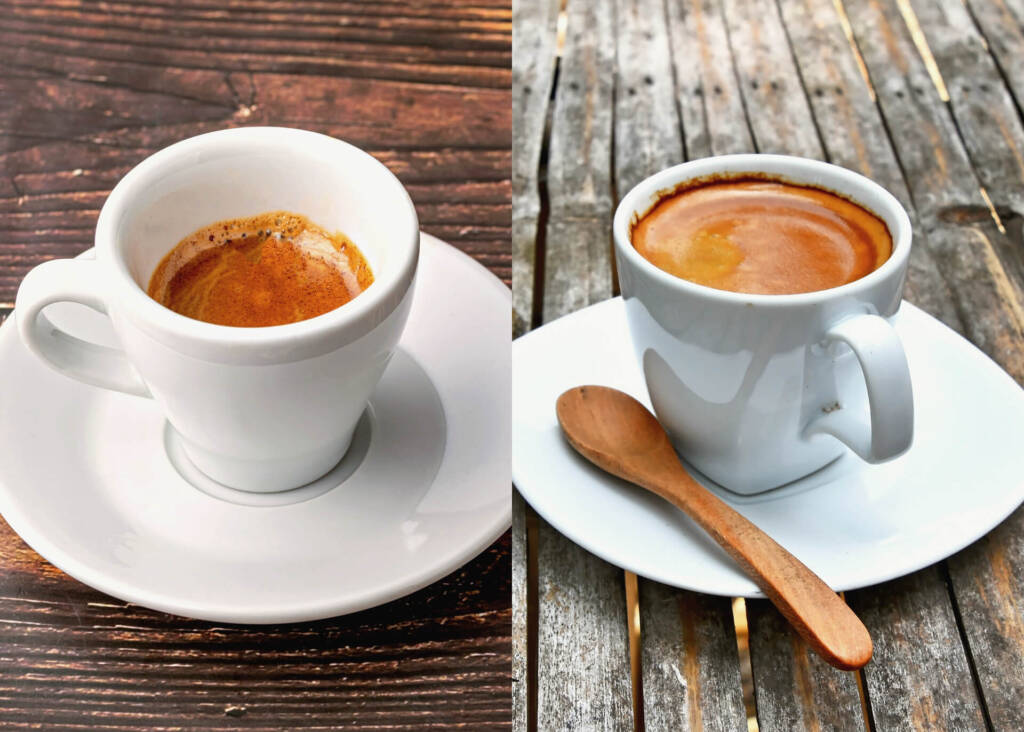
Serving size
Espresso is among the smallest available coffee drinks in terms of serving size. The standard serving size is roughly 30 ml (1 fl. oz) for a single espresso and 60 ml (2 fl. oz) for a double espresso.
I call these serving sizes “standard,” but there isn’t a true standard for single and double shots.
Espresso serving size varies fairly wildly between coffee shops, depending on their machines and techniques. Some cafes even offer a triple shot option, which uses more ground coffee and results in a stronger, more concentrated espresso.
For example, single and double espresso at Starbucks are significantly smaller. According to their standards, a single shot contains only 22 ml of espresso (0.75 fl. oz) and a double shot of espresso has 44 ml (1.5 fl. oz).
Starbucks uses a smaller serving size because their equipment makes it easier to maintain high espresso quality.
Similarly, your favorite coffee shop might have its serving size standard that could be different altogether.
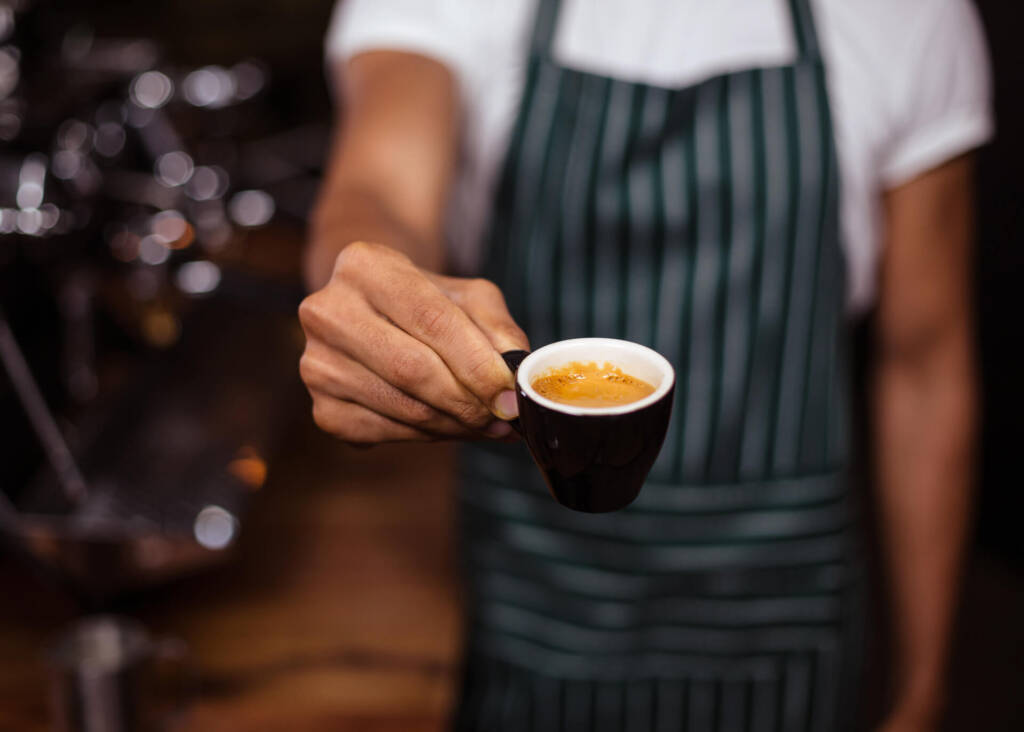
You might think a cafe serving you a slightly smaller espresso is ripping you off. However, volume isn’t a precise measurement for espresso serving.
That’s all because of the crema. This golden brown layer of foam floating on top of thick espresso is essential to the beverage. Yet it can throw volume-based measurements off completely because many factors affect how much crema you get.
For example, using freshly roasted coffee, Robusta beans, or higher pressure while brewing coffee results in more crema.
You could have two single shots side by side and think one is a double shot simply due to the differences in the amount of crema.
Yet, both of them may have the same amount of actual espresso.
The inconsistency in the crema layer makes volume-based visual measurement pretty useless for espresso.
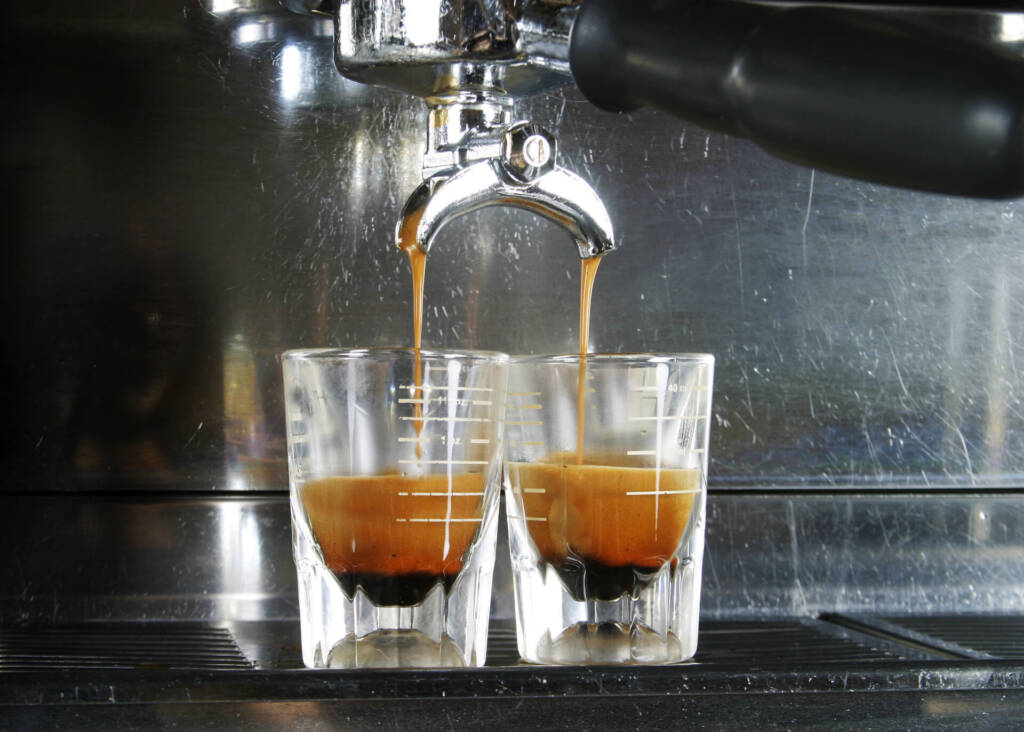
Weight of espresso
Measuring espresso in milliliters often results in conflicting measurements. That’s why most baristas in the modern specialty coffee industry use weight as the basis when making espresso drinks.
A properly pulled single shot weighs approximately 14-16 grams, while a double shot of espresso weighs around 28-32 grams.
But how do we determine that weight? The answer lies in the brew ratio.
To figure that out, we need a bit of basic math. Don’t worry — this is pretty straightforward!
In most cases, a barista will use a simple brew ratio of 1:2. This means that the drink — whether a double or single espresso shot — should weigh twice as much as the coffee grounds used to make it.
You already know the standard coffee dosage range for a single vs. double shot of espresso (7-8 vs. 14-16 grams, in case you skipped that section). Just double that and you get the ideal espresso weight.
Weight-based espresso preparation is relatively new, relying on compact digital scales that fit on an espresso machine’s drip tray.
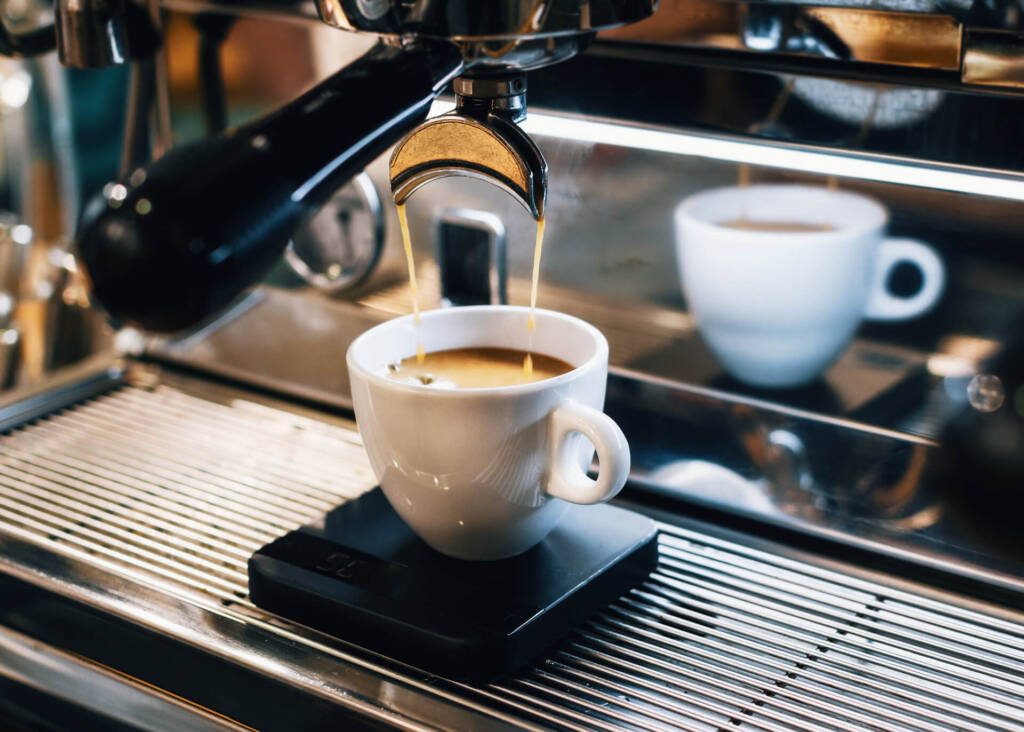
Coffee scale measurement is also a bit more laborious technique, but it’s more consistent and precise.
With the traditional volume measurement method, it’s much more difficult to reliably pull consistent quality shots than weighing the result.
As long as you know the ratio, it scales smoothly whether you make a single or double espresso.
With all that said, you can alter the brew ratio to your taste. Increasing the amount of water lowers the espresso’s relative strength and vice versa.
Many cafes use a ratio closer to 1:2.5, which is a bit weaker than the standard. And if you lower the ratio to 1:1, it produces a ristretto — a famous highly concentrated shot.
I wholeheartedly recommend experimenting with espresso ratios until you find that perfect balance between rich flavor and a pleasing texture and mouthfeel.
Just remember to jot down the ratio with every pull!
You will then have an exact recipe for single and double espresso shots. Using exact measurements, you can up your coffee game and avoid confusion during brewing.
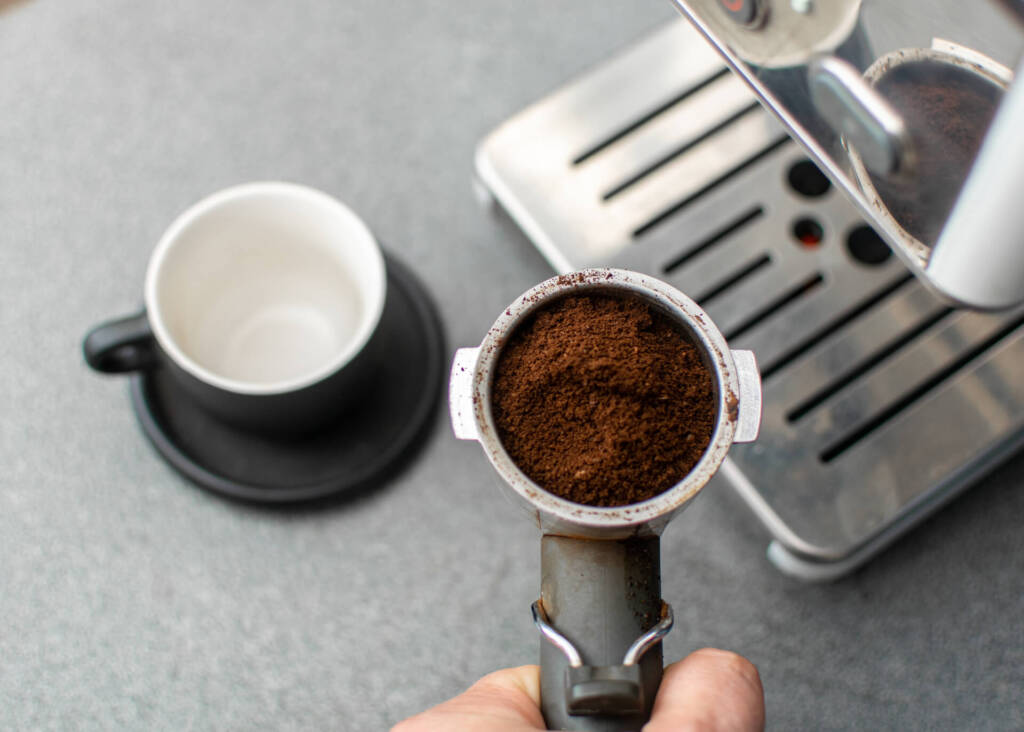
Caffeine content
Espresso is famous for having a high caffeine-to-volume ratio. But is a double espresso stronger than a single shot?
A double espresso shot is typically stronger than a single because it has higher caffeine content.
On average, a single espresso shot contains roughly 63 milligrams of caffeine. Double-shot espressos, in comparison, have approximately 130 milligrams.
Twice the amount of coffee, twice the caffeine. Yet, this is not a rule carved in stone.
Several factors can affect how much caffeine your single or double espresso contains.
First, the type of beans can significantly affect the caffeine content. Arabica is traditionally considered a more flavorful and desirable coffee type. However, many coffee shops use Robusta beans when making espresso despite their less refined flavor.
Robusta is cheaper and more forgiving during brewing, producing more crema. It also contains more caffeine, so a shot made with only Robusta or a Robusta and Arabica blend is typically stronger than 100% Arabica.
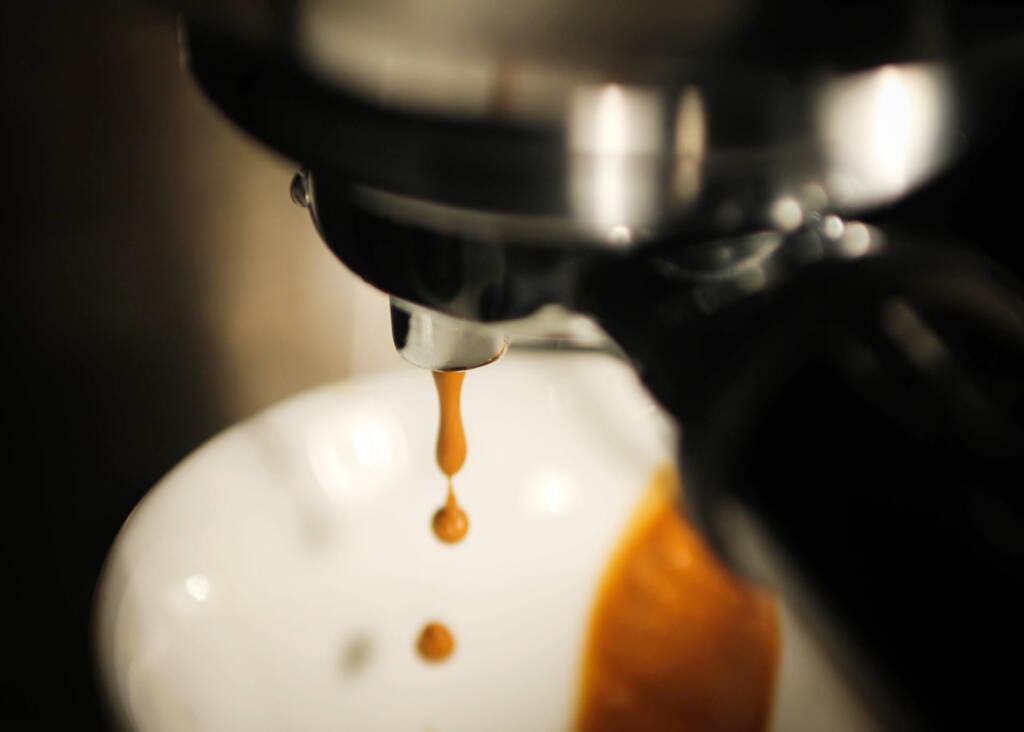
Coffee bean roast level can also affect the caffeine content in a shot. Espresso is generally made with dark roasts, which have marginally less caffeine than lighter ones. But if you make espresso with a lighter roast, there will be more caffeine per shot.
As you can see, various factors impact how much caffeine a single vs. double espresso has. But despite the variability, a double shot will always be stronger.
So, coffee drinkers who need an energy boost after a poorly slept night should order a double espresso shot.
One shot is ideal if you enjoy a bold and intense flavor but don’t want as much caffeine. This is also the regular shot you’ll be served at most cafes in Italy.
Finally, most famous coffee drinks — from Americano to latte and cappuccino — use a double-shot espresso as their base for its higher caffeine content. However, it gets diluted with steamed milk or water.
When you love espresso like I do, you always want to learn more about it. That knowledge is not only handy when ordering your coffee. Most importantly, it helps you understand what you like best and appreciate your favorite drink even more.
You now know all about the differences between single vs. double espresso shots. So, the next time you order an espresso, you can tell your barista exactly how you want your drink!
Ready to test your knowledge of all things coffee? Check out my Coffee Trivia questions to challenge yourself and learn fascinating facts that even baristas might not know!
